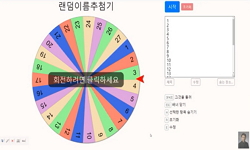This article compares the Malgal(靺鞨) of the 8th century with the Yeojin(女眞) of the 10th to 12th centuries to see how they are related. Overall, the connection between the Malgals and the Yeojin is supported by the large number of characters in...
http://chineseinput.net/에서 pinyin(병음)방식으로 중국어를 변환할 수 있습니다.
변환된 중국어를 복사하여 사용하시면 됩니다.
- 中文 을 입력하시려면 zhongwen을 입력하시고 space를누르시면됩니다.
- 北京 을 입력하시려면 beijing을 입력하시고 space를 누르시면 됩니다.
https://www.riss.kr/link?id=A109649921
-
저자
김락기 ((재) 인천문화재단)
- 발행기관
- 학술지명
- 권호사항
-
발행연도
2025
-
작성언어
Korean
-
주제어
말갈 ; 여진 ; 이름 ; 작명법 ; 표기법 ; Malgal(Mohe) ; Yeojin(Jurchen) ; Name ; Nomenclature ; Notation
-
등재정보
KCI등재
-
자료형태
학술저널
- 발행기관 URL
-
수록면
355-384(30쪽)
- DOI식별코드
- 제공처
-
0
상세조회 -
0
다운로드
부가정보
다국어 초록 (Multilingual Abstract)
This article compares the Malgal(靺鞨) of the 8th century with the Yeojin(女眞) of the 10th to 12th centuries to see how they are related. Overall, the connection between the Malgals and the Yeojin is supported by the large number of characters in common between the two periods, indicating a cultural affinity between the two groups. However, it can be seen that there were some changes in the Malgal and Yeojin societies in the 8th century, as the name ‘Mong(蒙)’, which was representative of Malgal, disappeared completely and new names such as ‘Bul(弗)’ and ‘Dal(達)’ appeared. Although we have not been able to identify the specific cause of the change, we speculate that the rise and fall of Balhae(渤海) and its control may have been one of the factors. In particular, we noted that the “□□蒙” form of the name, which is known to be a representative name for Malgal, only appears in the actual records for a very short period of time, from 714 to 727, and does not appear again until 776, even if we include the Balhae. The year 727 is thought to be the point at which Balhae expanded and strengthened its control over the Malgal region through its attack on the Heuksu Malgal(Heishui Mohe, 黑水靺鞨), and the disappearance of the ‘Mong’ name after 727 may be significant. In addition, in the vacuum of state power that occurred in Manchuria after the fall of Balhae in 926, changes such as the convergence of the Malgal and Yeojin groups were found, and it was assumed that this situation was also related to changes in Nomenclature.
동일학술지(권/호) 다른 논문
-
- 한국고대사학회
- 김은정
- 2025
- KCI등재
-
- 한국고대사학회
- 장병진
- 2025
- KCI등재
-
『日本書紀』 孝德紀에 보이는 倭國의 대외 관계 -韓半島諸國과의 교류를 중심으로-
- 한국고대사학회
- 홍성화
- 2025
- KCI등재
-
- 한국고대사학회
- 조원진
- 2025
- KCI등재





 DBpia
DBpia






